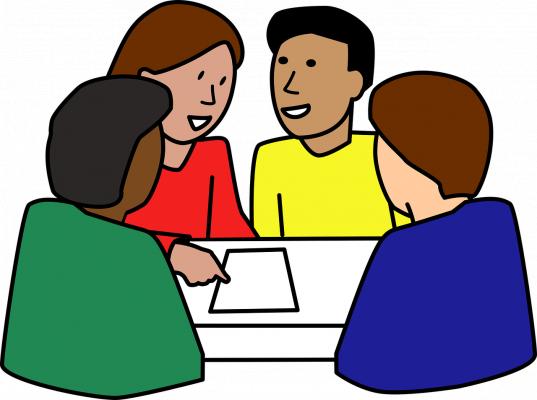

Learning resource
Dialogue space
- Raising awareness in educational circles, at the level of families, policy makers and the public opinion in general, about the need to address and handle prejudice and stereotypes from the right perspective, and the need to build a culture of social harmony and respect for diversity.
- Actively engaging students to contribute to creating a safe, welcoming space in school, a space that makes it easier for students with different cultural backgrounds to meet and express themselves freely.
- Implementing intercultural educational activities as a means of fighting reciprocal stereotypes, acknowledging similarities and differences between different cultures, exchanging reference points and knowledge, teaching respect and open-mindedness, taking into account the cognitive and knowledge dimension (opening minds) as well as the affective and relational one (opening hearts).
The dialogue space is a useful place for drawing attention and focusing on the question of challenging discrimination and stereotypes in educational environments.
A dialogue space is a protected area for meetings and dialogue devoted to cultural exchange among students. The dialogue space can be a classroom with teaching materials, equipment for meetings, for making videos and theatre workshops. It has to be pleasant, welcoming and open to everyone and to all types of dialogue. It has to be easily recognisable and highly visible.
Involving the students in setting up the space, encouraging direct participation by taking an active part in improving and arranging the space (painting, choosing and buying materials, books, etc.) and promoting it is a way to make them feel the place as their own and to take responsibility for it in order to respect it.
The presence of a facilitator is important to promote and manage activities in the best possible way. It is important to inform all students and teachers about the dialogue space and the activities that take place there. Advanced and long-term activities should be supervised by interested volunteer students. Try to form heterogeneous groups of students (according to age, gender, nationality) in order to facilitate cultural exchange and comparison.
The dialogue space, therefore, is used in two ways, as a place for organising:
- scheduled opportunities for meetings and discussions, regardless of the occurrence of critical situations;
- activities following the emergence of critical situations.
Dialogue space activities should take place during school time and be a part of the school curriculum.
The following activities and resources can be provided: a library of discrimination issues and relationships between cultures, music, drama workshops, storytelling, group conversations, discrimination box, role-play, cooking, practical activities, meeting with other schools, meeting outside the school, meeting with parents, development of activities on the internet (blogs, questionnaires...).
A chance to meet witnesses and testimonials of various kinds is also important: for example journalists and psychologists, anthropologists and economists, educators and social workers.
A coordinator or contact person responsible specifically for addressing issues related to prejudice and stereotypes. Apart from being trained in the field, this person must be familiar with conflict mediation and managing groups. The role of coordinator can be shared by different teachers (staff memebrs) at the same institution. It is also important to generally encourage moments of confrontation among the whole school team.
It is imperative that the facilitator and mediator (together with the group of teachers and, possibly, with students themselves) define, in starting tasks, a number of very concrete objectives and results to be achieved: without this definition the experience turns out to be a little constructive and the space is in danger of turning into a recreational area.
These objectives (between 3 and 10) are reported on a card that will be used by students, at the end of the experience, as a self-assessment grid and as a group assessment tool by the team of teachers.
It is very useful that, at the end of the experience, the learners manage to define a small list of "advice" to be spread in order to prevent problematic situations, origin of this event.
English
Slovenian
Portuguese, Portugal
French
Italian
German
Romanian
Spanish
Dutch
